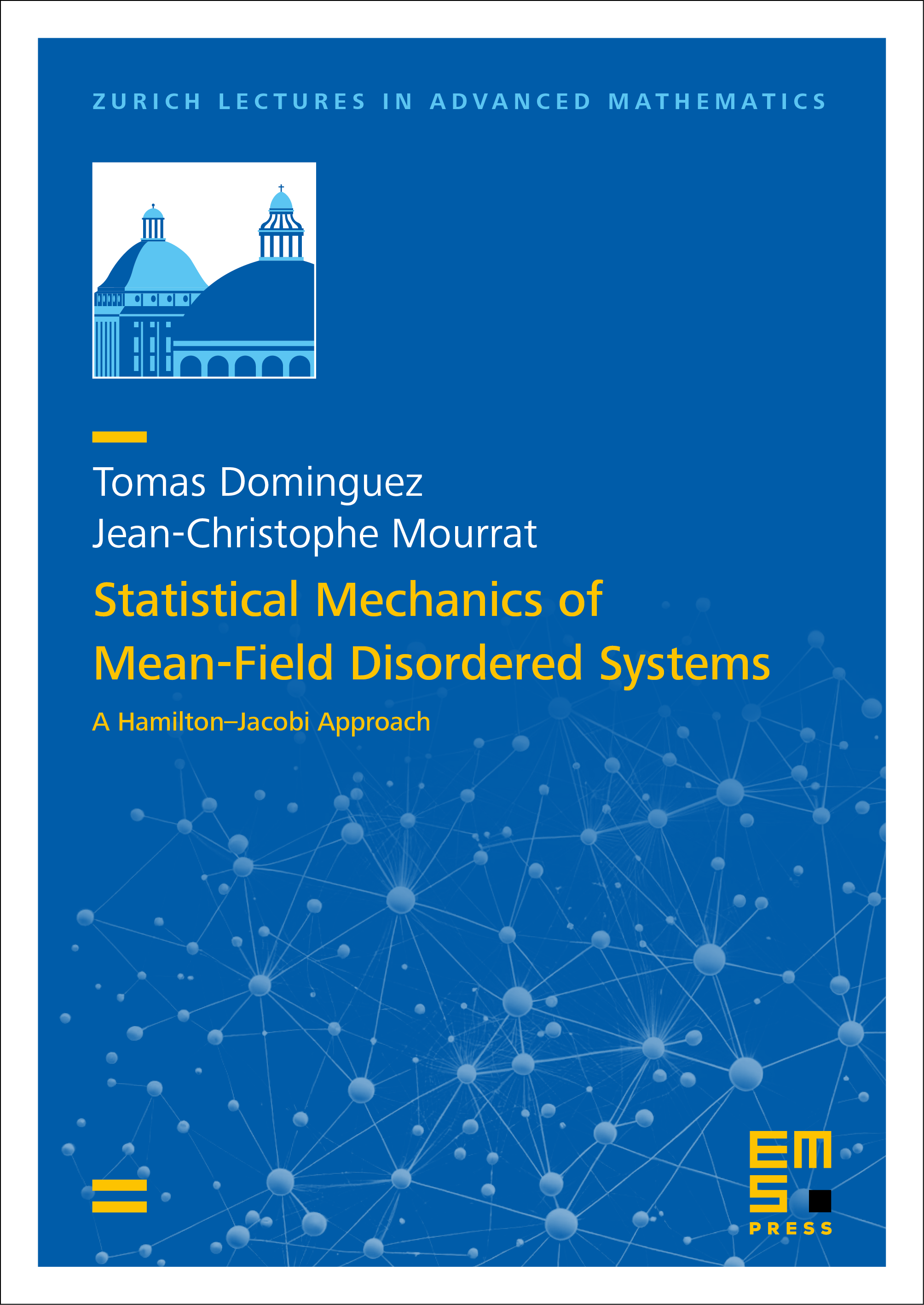Statistical Mechanics of Mean-Field Disordered Systems
A Hamilton–Jacobi Approach
Tomas Dominguez
University of Toronto, CanadaJean-Christophe Mourrat
École Normale Supérieure de Lyon, France

A subscription is required to access this book.
The goal of this book is to present new mathematical techniques for studying the behavior of mean-field systems with disordered interactions. We mostly focus on certain problems of statistical inference in high dimension, and on spin glasses. The techniques we present aim to determine the free energy of these systems, in the limit of large system size, by showing that they asymptotically satisfy a Hamilton–Jacobi equation.
The first chapter is a general introduction to statistical mechanics, with a focus on the Curie–Weiss model. We give a brief introduction to convex analysis and large deviation principles in Chapter 2, and identify the limit free energy of the Curie–Weiss model using these tools. In Chapter 3, we define the notion of viscosity solution to a Hamilton–Jacobi equation, and use it to recover the limit free energy of the Curie–Weiss model. We discover technical challenges to applying the same method to generalized versions of the Curie–Weiss model, and develop a new selection principle based on convexity to overcome these. We then turn to statistical inference in Chapter 4, focusing on the problem of recovering a large symmetric rank-one matrix from a noisy observation, and we see that the tools developed in the previous chapter apply to this setting as well. Chapter 5 is preparatory work for a discussion of the more challenging case of spin glasses. The first half of this chapter is a self-contained introduction to Poisson point processes, including limit theorems on extreme values of independent and identically distributed random variables. We finally turn to the setting of spin glasses in Chapter 6. For the Sherrington–Kirkpatrick model, we show how to relate the Parisi formula with the Hamilton–Jacobi approach. We conclude with a more informal discussion on the status of current research for more challenging models.